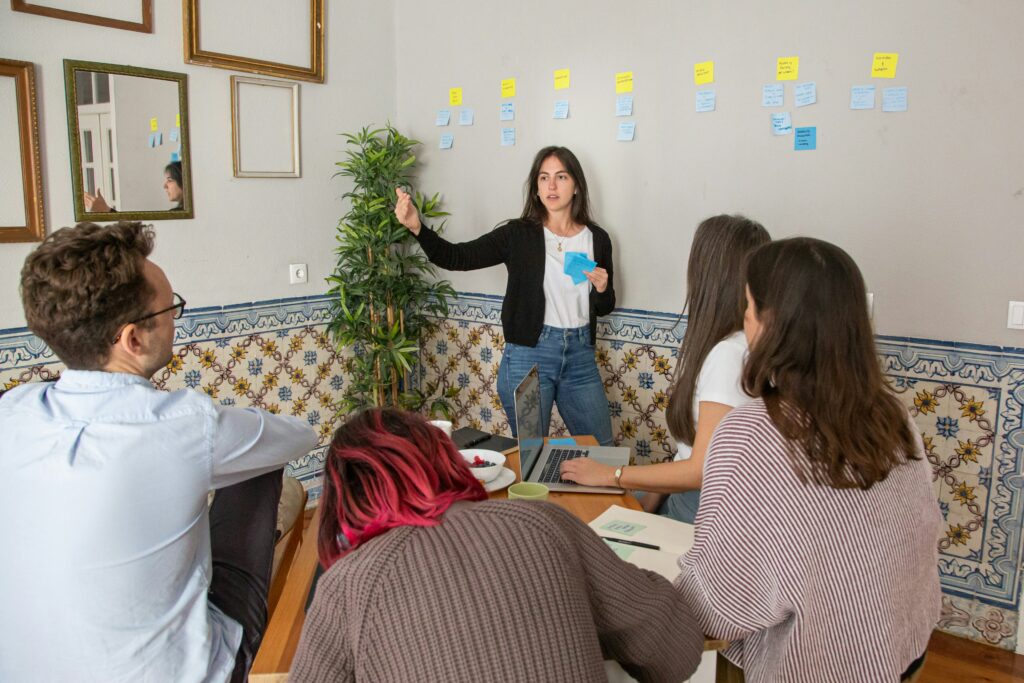Posts in Category: EDCI339 – Distributed and Open Learning
Peer Response Post #8
Hi Liam,
I really enjoyed your take on Open Pedagogy and how it shifts the traditional classroom dynamic. I especially connected with your reflections on your high school experiences with this teaching style—how it empowered you, yet also presented challenges. It’s a good reminder that while Open Pedagogy can hugely benefit motivated students, it might require more support for those who struggle with less structured approaches.
Your insights into Open Educational Resources (OER) struck a chord with me too. The way you explained their role in reducing costs and enhancing accessibility outlined the significant potential they have to make education equitable. I’ve noticed similar impacts in my own studies where OER have been a game-changer.
Also, your breakdown of Creative Commons licensing was super clear. It’s great to see how these licenses can support ethical sharing and innovation in education, something I’m trying to incorporate into my own projects.
Thanks for such a nuanced post—it gave me a lot to think about, especially on how we can better support all students in an open education framework.
Peer Response Post #7
Hi Marc,
Great post on Open Pedagogy! I appreciated how you highlighted the shift from traditional instructor-centered teaching to a collaborative, student-driven approach. Your examples of MIT OCW and OpenStax effectively showcase how Open Educational Resources (OER) can break down financial barriers and enhance access to education.
Your explanation of Creative Commons licensing also sheds light on how these licenses support ethical sharing and adaptation of educational content. It’s exciting to see how embracing open practices can lead to more inclusive and innovative educational environments.
Thanks for sharing these insights!
Peer Response Post #6
Hi Percy,
Great post on Open Pedagogy and the transformative power of OER! I really appreciated your example of the economics class collaboratively creating an open textbook, which beautifully illustrates the depth of understanding and ownership that Open Pedagogy can foster among students.
Your insights into the adaptability of OER, such as using global case studies for a more enriched curriculum, highlight their potential to make education more equitable and accessible. Additionally, your discussion on Creative Commons licensing provides a clear view of how these tools support ethical and responsible sharing of educational materials.
Thanks for sharing your thorough perspective on how Open Pedagogy can lead to more innovative educational practices.
Peer Response Post #5
Hi there!
Your comprehensive post on Open Pedagogy beautifully articulates how this approach not only shifts the educational paradigm but also empowers students and educators alike. I particularly enjoyed your discussion on how Open Pedagogy centers on student autonomy and interdependence, setting a foundation for a democratic and participatory learning environment.
You’ve detailed the profound impact of Open Educational Resources (OER) in democratizing education, making it more accessible and equitable. The practical examples you provided, such as using updated, relevant materials like data from the Covid-19 pandemic, illustrate the dynamic possibilities OER offers to tailor educational content to contemporary issues.
Your insights into the global trends and the historical context of OER adoption were enlightening, highlighting significant strides and ongoing challenges. It’s inspiring to see how these resources can transcend traditional barriers in education, providing equitable opportunities for all learners, irrespective of their circumstances.
Thank you for such an enlightening read and for the practical takeaways on applying Open Pedagogy in diverse educational settings!
Peer Response Post #4:
Hi Elena,
Great post! I really appreciated your deep dive into Open Pedagogy and the core principles that drive it. It’s exciting to see how you underscore the shift from traditional teaching to a model that champions student empowerment and collaborative learning. Your enthusiasm for Open Educational Resources (OER) shines through, especially when you talk about their adaptability and how they’ve personally enhanced your learning journey.
I’m also impressed with how you navigate Creative Commons licensing to ethically use and share materials. It’s super helpful to hear about these practical applications in a real-world context.
Thanks for such a vibrant and informative exploration of these educational strategies!
Peer Response Post #3:
Hi Amira,
Great post on Open Pedagogy and OER! You’ve effectively highlighted how these resources can transform educational experiences by fostering active participation and collaboration. Your discussion on Creative Commons licensing also thoughtfully emphasizes the benefits of sharing knowledge openly and responsibly.
Building on your points, I’m curious about how addressing the digital divide might further enhance the reach and effectiveness of OER, particularly in less-resourced areas. Your blog encourages deeper consideration of how we can provide all learners with the tools they need to fully benefit from open educational resources.
Thanks for sharing your insights!
Blog Post #4: Embracing Open Pedagogy
Introduction
My academic journey has been profoundly influenced by the discovery and use of Open Educational Resources (OER). These resources have opened up new ways for me to access, interact with, and understand course materials, making learning more adaptable and accessible.
Understanding Open Pedagogy:

By New Africa on AdobeStock
Open Pedagogy has revolutionized the traditional teaching model by fostering an environment where learning is a collaborative process. Unlike conventional methods that often promote a passive reception of information, Open Pedagogy encourages active participation and co-creation of learning materials, which provides a larger toolbox of knowledge for educators and students alike. This approach has empowered me to take a more active role in my education, allowing for a deeper connection with the course content.
Practical Application of Open Pedagogy:
A standout example of Open Pedagogy in action was during on elf my sociology seminar classes last year. The majority of the semester was dedicated to student-driven learning, where we worked in pairs to teach the entire class. Each group selected a topic, developed a comprehensive presentation, and then led the class discussion. This method not only enhanced our understanding of the sociological concepts, but also honed our skills in research, presentation, and collaboration, embodying the core attributes of Open Pedagogy such as student-centered learning and empowerment.
Empowering Students through Open Pedagogy:
The experience in my sociology class is a testament to how Open Pedagogy can transform the educational experience. Katherine Cadwell’s TEDx talk on how students should lead the classroom further underscores this point. She discusses the shift from teach-led to student-centered learning, which resonates deeply with my own experiences. Her insights serve as a powerful reminder of the potential of Open Pedagogy to create educational environments where students feel genuinely involved and valued.
The Role and Impact of OER:
OER have been instrumental in my studies, providing accessible, high-quality resources at no cost. These resources have alleviated the financial burdens associated with expensive textbooks and offered diverse learning tools that cater to different academic needs and learning styles. Katie Gosa’s Tedx talk on OER highlights how these resources reduce educational costs and improve accessibility, further enhancing the equitable and innovative nature of teaching methods across diverse educational landscapes.
Conclusion:
The adoption of OER and the principles of Open Pedagogy have not only facilitated my personal and academic growth but also subtly influenced my perspective on education. These approaches encourage a more connected, accessible, and flexible educational environment, where learners and educators alike can thrive.

Resources:
Hegarty, B. (2015). Attributes of Open Pedagogy: A Model for Using Open Educational Resources. Educational Technology, 55(4), 3–13. http://www.jstor.org/stable/44430383
https://connectedlearningpathways.ca/category/edci-339-a01-module-4/
Blog URL: https://katenelsonstudies.opened.ca/blog-post-4-embracing-open-pedagogy/
Peer Response Post #2
I really enjoyed your post on Universal Design for Learning (UDL), accessibility, and ethical EdTech. You did a great job explaining UDL’s three core principles and how they can be adapted to both traditional and digital classrooms to support diverse learning needs. Your personal examples added a great ayer of relatability, highlighting the importance of accessibility tools like screen readers and adjustable font sizes. Additionally, your discussion on the ethical concerns of data privacy and equity in technology access was particularly insightful, underscoring the need for vigilant and inclusive educational practices. Your post effectively captures the essence of creating supportive and secure learning environments.
Thank you for sharing!
Peer Response Post #1
Hi Elena,
Fantastic post on Universal Design for Learning (UDL)! You’ve highlighted how UDL promotes inclusivity in both physical and digital classrooms by providing various engagement methods. It’s great how you connect these principles to ensure every student finds a learning format that suits them.
Expanding on your points, integrating UDL with tools that support social emotional learning (SEL) – such as online bulletin boards for check-ins – could further enhance online environments, making them more inclusive and responsive to student needs during transitions between in-person and remote learning.
Your example of moving dance classes online showcases UDL’s practical application in maintaining educational continuity.
Thank you for sharing!
Blog Post #3
From my perspective, Universal Design for Learning (UDL) is a powerful framework that challenges the traditional “one-size-fits-all” mindset in education. Instead of waiting to adapt materials once barriers are identified, UDL encourages instructors to proactively design courses and classrooms so that all students, regardless of their backgrounds or abilities, can fully engage. The UDL guidelines, developed by CAST, center on three foundational principles: Multiple Means of Engagement, Multiple Means of Representation, and Multiple Means of Action & Expression. By intentionally weaving these principles into teaching – from how content is presented to the ways students are allowed to demonstrate knowledge – an environment emerges where every learner can thrive.
For example, an instructor might post diverse materials – like captioned videos, infographics, and articles at varying reading levels – to cater to different preferences or needs. Students, in turn, can choose how they best consume information, whether they prefer reading, listening, or watching.

Applying UDL and Accessibility Principles
Reflecting on one of my classes from last semester, I noticed significant gaps in how UDL principles were applied. The physical classroom layout immediately posed a challenge: the projector screen was positioned in such a way that students seated along the wall had a limited view of the lecture slides. This setup unintentionally excluded anyone who, for various reasons, might need or prefer to sit in a less central part of the room – whether they deal with mobility concerns or simply strive late and find themselves in the periphery. Additionally, the course relied heavily on specialized software that had to be accessed through a laptop or designated campus computer labs. At the time, I only had a tablet, making it much harder to complete certain assignments and fully participate in the in-class exercises.
To better align with UDL, the instructor could have offered multiple ways to access the software—perhaps through web-based platforms or simplified mobile-friendly applications. They might have also ensured that the classroom was arranged so that no student’s view of the presentation was obstructed. Furthermore, providing alternative devices or loaner laptops would have helped ensure equitable access for those who did not possess the required technology. Even simple steps like rotating seats or posting lecture materials in an online repository would have gone a long way toward creating a more inclusive environment.
Ultimately UDL is not about accommodating a select few; it is about designing learning experiences that adapt to the variety of ways people learn. By mindfully incorporating the UDL guidelines, instructors can cultivate a sense of belonging and agency among all students – fostering an atmosphere where everyone is encouraged to succeed on their own terms.

URL for this blog:
katenelsonstudies.opened.ca/?p=197
Recent Comments